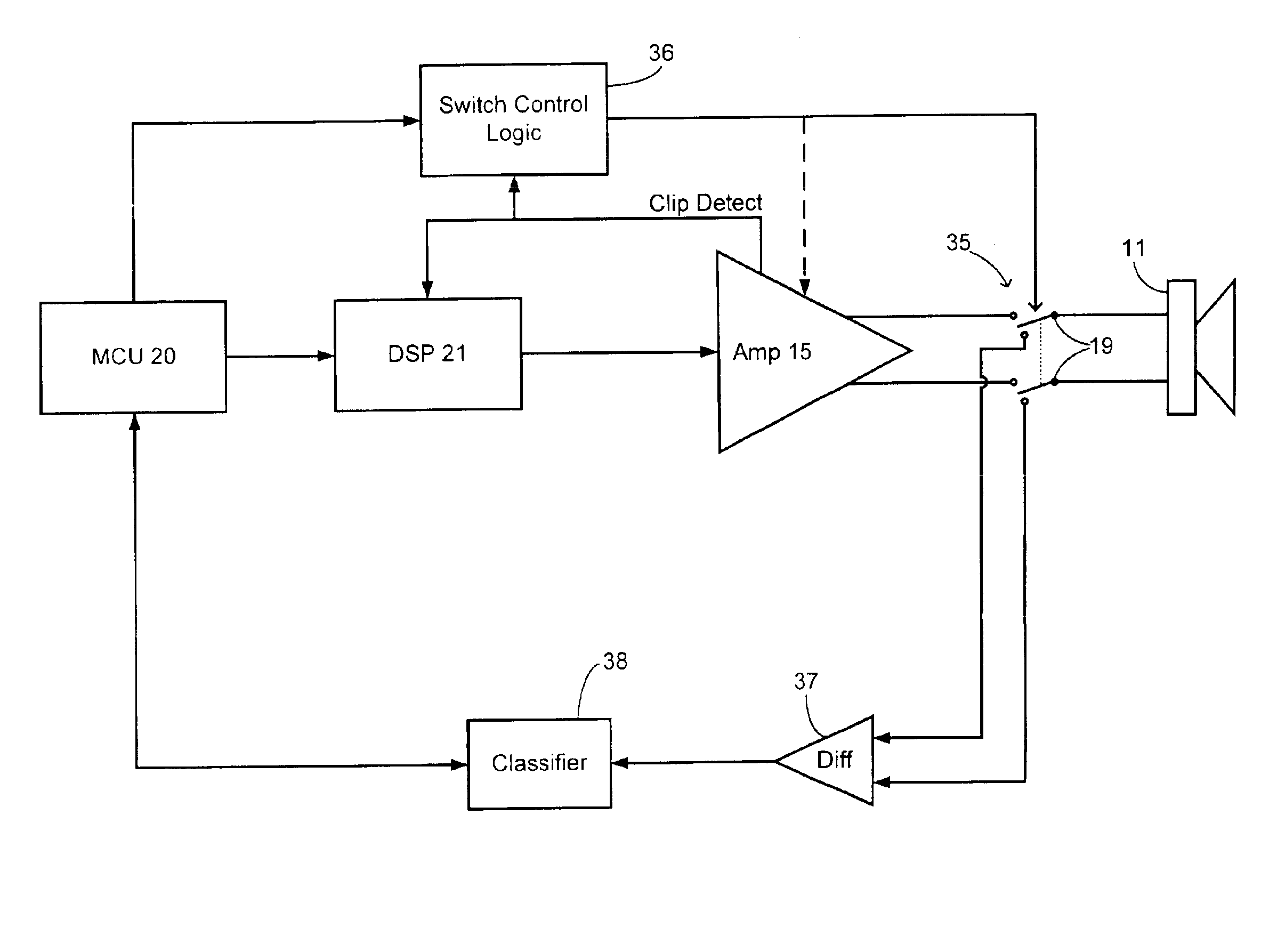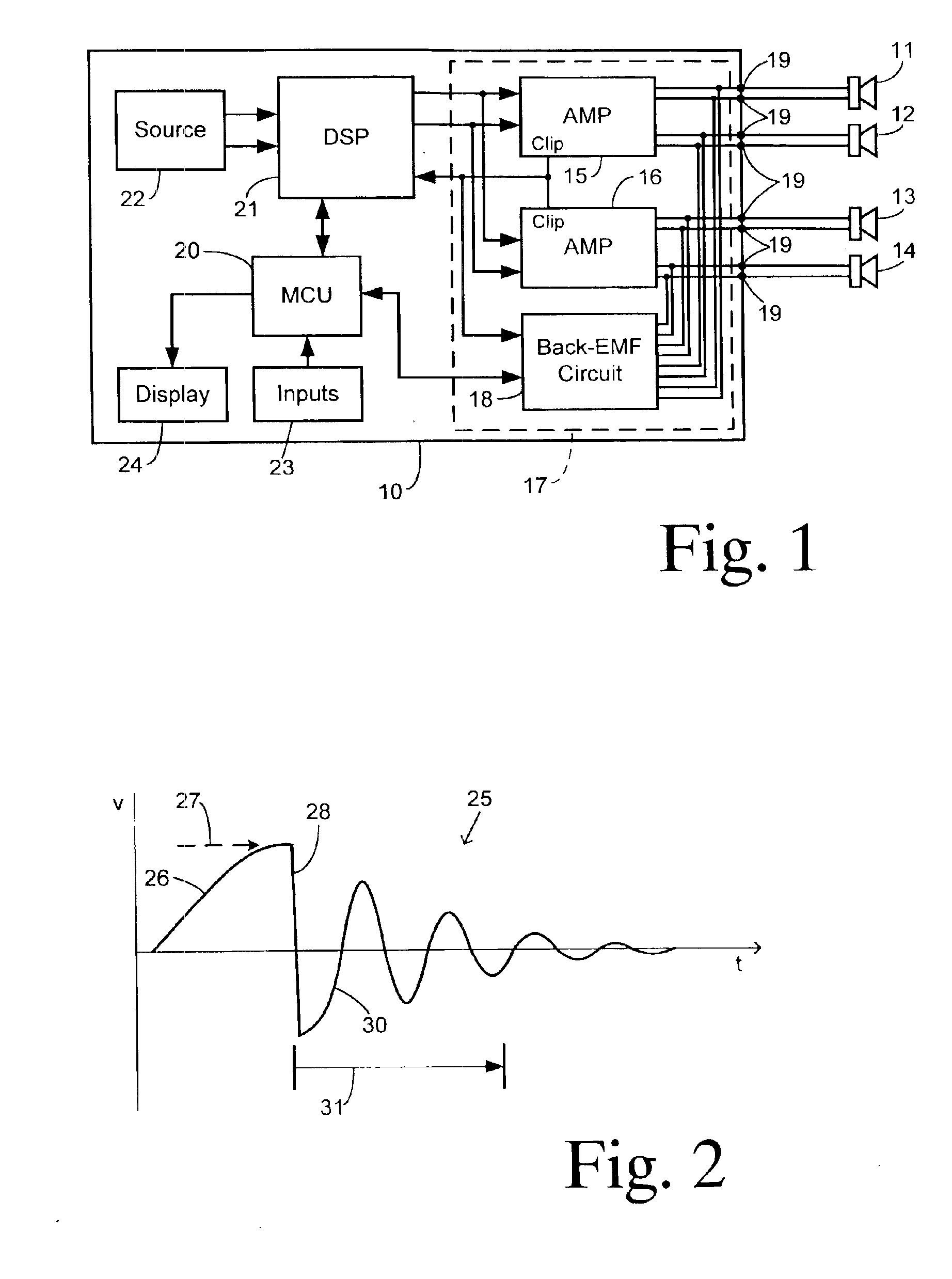Audio loudspeaker detection using back-EMF sensing
a technology of audio loudspeaker and detection field, applied in the direction of transducer casing/cabinet/support, electrical transducer, instruments, etc., can solve the problems of bending or breaking terminals, failure to properly join the harness wiring to the speaker terminal, and experiencing wiring problems
- Summary
- Abstract
- Description
- Claims
- Application Information
AI Technical Summary
Benefits of technology
Problems solved by technology
Method used
Image
Examples
Embodiment Construction
Referring to FIG. 1, an audio system 10 is connected to a plurality of speakers 11-14. Output amplifiers (i.e., power amplifiers) 15 and 16 drive left and right stereo speakers from front and rear speaker sets, respectively. Audio system 10 may be contained within a single head unit, or an output section 17 may be contained in a separate power amplifier module, for example. A back-EMF circuit 18 is directly connected to audio system output terminals 19 for detecting back-EMF voltages to verify proper speaker interconnections as described later.
Audio system 10 includes an audio source 22 such as a radio tuner, cassette player, or compact disc player, for example. An audio signal from source 22 is provided to the input of a digital signal processor (DSP) 21 which outputs left and right stereo signals to amplifiers 15 and 16. A microcontroller unit (MCU) 20 communicates with DSP 21 and source 22 to control operation of the audio system. MCU 20 receives input commands from inputs 23 whi...
PUM
 Login to View More
Login to View More Abstract
Description
Claims
Application Information
 Login to View More
Login to View More - R&D
- Intellectual Property
- Life Sciences
- Materials
- Tech Scout
- Unparalleled Data Quality
- Higher Quality Content
- 60% Fewer Hallucinations
Browse by: Latest US Patents, China's latest patents, Technical Efficacy Thesaurus, Application Domain, Technology Topic, Popular Technical Reports.
© 2025 PatSnap. All rights reserved.Legal|Privacy policy|Modern Slavery Act Transparency Statement|Sitemap|About US| Contact US: help@patsnap.com



